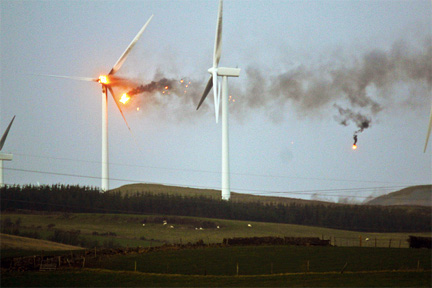The Renewable Energy Scam
March 4, 2019, Ed Hiserodt

A number of U.S. municipalities and businesses have been bragging that they are 100-percent powered by renewable energy. Notable among these is the city of Georgetown, Texas, where in August 2016 the guru of global warming, Al Gore, participated in a ceremony where he spoke of the town as a “trailblazer.” His appearance with the town fathers, including Mayor Dale Ross, was featured in Gore’s 2017 An Inconvenient Sequel.
According to the Sierra Club, “More than 80 municipalities, five counties, and two states — Hawaii and California — have a 100 percent renewable goal.” Driving this move toward energy sources that are expensive and unreliable is the widespread but errant belief that “green power” is a viable alternative to conventional power sources, as well as political pandering to the environmentalist Left and plain old-fashioned greed.
But even the good intentions of those seeking to be environmental protectors can’t protect from the consequences of bad energy decisions. Interestingly, a prime example of the results of misguided pandering is the aforementioned trailblazer Georgetown. As was reported in a December 18, 2018 article in the Daily Caller, Georgetown is buckling under the loss of $7 million per year from malinvestment in contracts with the Buckthorn solar plant and Spinning Spur 3 wind farm.
Georgetown, like other places said to be 100-percent reliant on “renewable energy,” doesn’t actually have its own wind turbines, solar panels, and biomass resources powering it. It simply pays an upcharge for electricity that is said to come from renewable sources. If the green communities and businesses actually did use all renewables, it would likely be very easy to tell: On calm nights the lights would go out. A very few locales in the nation might have the geological features necessary to keep the lights on when renewables fade — such as hills and water that allow a sizeable hydroelectric dam — but most don’t.
In fact, the 100-percent renewable claims are a scam. Since the electricity from renewables plants — wind, solar, biomass — can’t be separated in the U.S. electric grid from that produced by conventional power plants, and is indistinguishable from it, much of the energy the communities use is, in fact, coming from conventional power plants.
Of course, the 100-percenters have figured out a slick way to get around these physics truths: They pretend. When a renewable energy source puts one megawatt-hour (1 MWh) on the electrical grid, it writes itself a certificate or credit saying it has done so. (There are precautions to ensure this is the case.) These certificates are transferable and can be sold to a broker who sells them to a utility or “100-percent renewable” municipality. Unspoken is the fact that the town often would be without power when there was darkness or a lull in the wind. Then thank God for conventional power plants.
Shrouded in Mystery
The 100-percent renewables
scam is being sold to us by the government, the utility companies, and
the towns and businesses that participate. The “scam” buys goodwill with
the duped public and is not only good public relations, it’s also an
easy route for them. But as with most governmental interference in the
free market, the public ends up taking it in the pocketbook.
Today’s injustice to consumers originally began with a subsidy to the wind-generation industry called the Production Tax Credit (PTC), passed by Congress in 1992. Each day there is a bidding war for the energy to go on the electrical grid that in turn is supplied to a network of public- and investor-owned utilities. Renewables compete with coal, nuclear, natural gas, and other generators. The PTC gave the renewable operators a credit of one-and-a-half cents per kilowatt-hour (kWh) of generation for energy created by renewable sources. This allowed renewable to make money even when the price of electricity was zero — not unusual during periods of low demand. In many states there were also laws giving renewables other advantages, even laws that have given priority to generators with the lowest fuel cost. Wonder who’s going to win that one?
While a boon to renewable operators, the PTC penalized reliable, conventional electric utilities (which are indispensable, since they must always be running in case the wind dies or it gets cloudy and they are needed to take over from renewables in providing energy) faced the choice of shutting down or losing money. More
